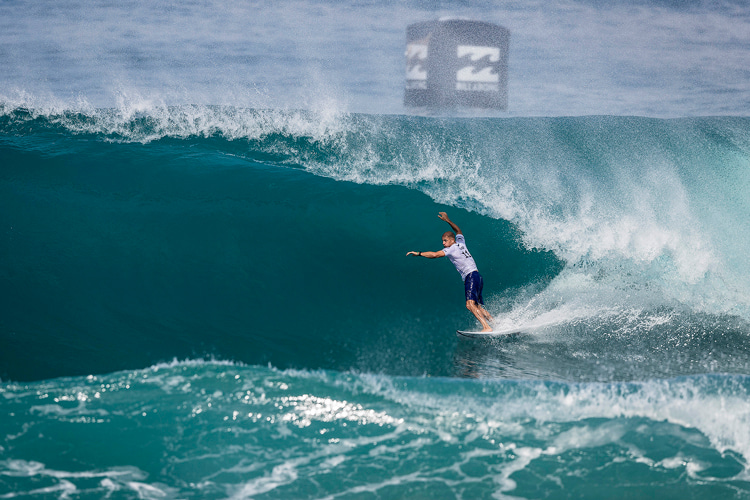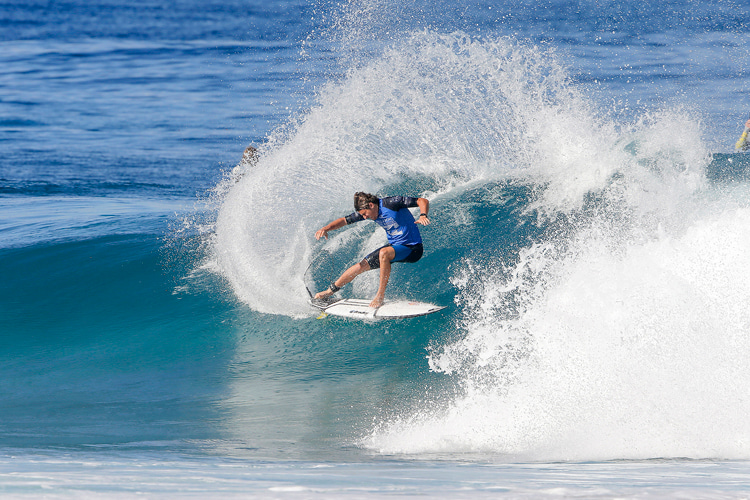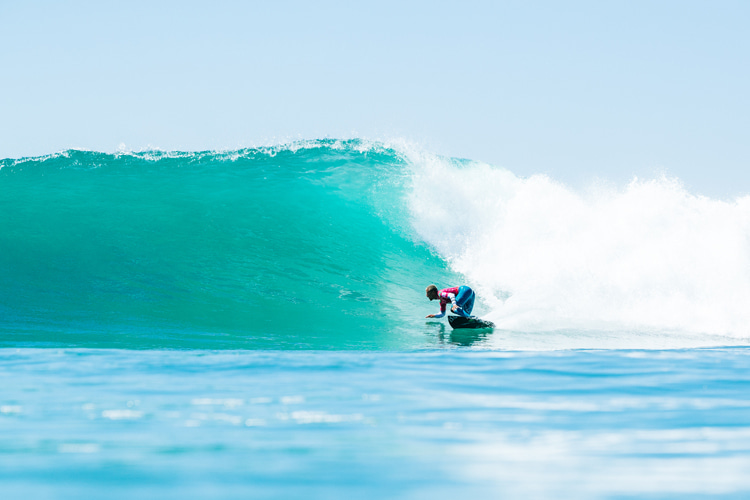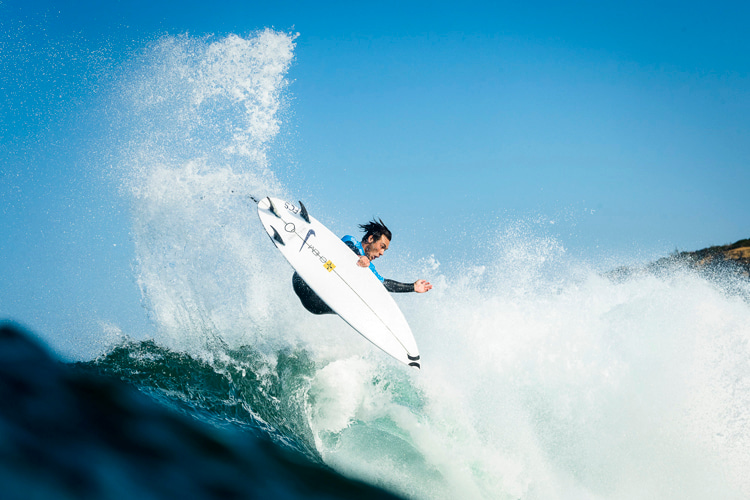Speed, power, and flow are the three main variables in competitive surfing. But does this winning formula translate to riding a wave?
Surfing is not a sport like football/soccer, tennis, basketball, or baseball.
At a professional level, it belongs to a category that requires judges to determine the winner of a heat or an event.
Instead of scoring points based on objective and clear goals - like hitting a ball over the net into the other player's court and expecting that the opponent cannot return it - surfers have to perform.
Perform, literally speaking.
They have to rely on subjective evaluation skills to convince the judges they are ticking the required boxes.
From a spectator's perspective, surfing's scoring system is relatively simple and straightforward.
Surf judges scrutinize a wave on a scale from 0 to 10, with the highest and lowest judges' scores - the outliers - eliminated from the final score and averaged to two decimal places.
The ultimate goal is to score a 10-point ride, also known as Perfect 10.
Subjective Judging
But how do the judging criteria work in competitive surfing? The sliding scale features five major elements. They are as follows:
- Commitment and degree of difficulty;
- Innovative and progressive maneuvers;
- Combination of major maneuvers;
- Variety of maneuvers;
- Speed, power, and flow;
The first four elements seem to be more tangible and fairly clear from a judging point of view.
But it's the fifth famous golden pot that often decides heat and event winners and world champions.
The Ultimate Winning Formula
Speed, power, and flow are the Holy Grail of competitive surfing.
At an elite level - the Championship Tour - nearly all surfers are able to perform and land surfing's most advanced and complex maneuvers.
They can all execute a bottom turn, get barreled, do a 360 air reverse, and perform a competent roundhouse cutback with more or less technicality, innovation, or degree of difficulty.
Therefore, the secret lies in the art of combining speed, power, and flow on the waves surfers ride in competition mode.
Interestingly, if you Google the three magical words, the first results are surf-related.
"Judges want to be entertained and surprised by the surfer just like the fans of the sport," underlines Australian surf coach Martin Dunn in his online surf training lessons.
"In preference, they want to see a surfer take off deep and perform a dynamic opening combination to begin their ride with speed and flow throughout."
"If there are any hesitations or stoppages, the judges will devalue the combination, which will be reflected in the final score awarded."
"Following the opening combination, judges look for total commitment for the rest of the ride with a powerful and controlled finish to complete the wave."
In the end, the sole objective is to maximize the trajectory available and pull off the best maneuvers.
Competitive surfing's three main judging variables are closely interconnected - one leads to another and another.
Let's break them down:
Speed

Speed is the first variable that comes into play in the competitive wave-riding experience.
From the moment surfers take off on a wave, they try to generate as much speed as possible to stay ahead of the whitewater and perform a variety of maneuvers in a short period of time.
In professional surfing, a world-class wave doesn't wait for the surfer - it just peels rapidly down the line for ten, 20, or 30 seconds.
Speed allows the surfer to explore all sections of an unbroken wave and unleash a series of high-performance maneuvers.
Nobody wants to see a surfer moving slowly and unable to complete a single cutback due to a lack of speed.
There are several techniques for generating speed but, most importantly, to channel that speed in an efficient and smart way.
Actually, professional surfers often use maneuvers to keep and even increase speed and accelerate further down the line.
So, speed is the main ingredient for what comes next - power and flow.
Power

The more speed a surfer generates, the easier it is to apply explosive moments to their rides.
The fast a competitor goes from a well-drawn bottom turn to the top of the wave, the more spectacular and flashy will be the off-the-lip, top turn, or air.
If there's one style of surfing that has never gone out of fashion is power surfing.
The concept of the power surfer is a timeless approach that requires not only physical prowess but also knowledge of the wave and its energy zone, foot positioning, and, obviously, speed.
Speed opens the door to powerful moves, abrupt changes in direction, functional maneuvers, shifting weight from toes to heels, using the arms to amplify tricks, and disrupting approaches to standard, conservative, and comfortable riding.
Aiming deeper, further, and higher will result in more critical and eye-catching moments, thus, higher scores from the judging tower.
Flow

As we've seen above, speed unlocks power.
Flow is the glue that adds art, grace, and elegance to each ride.
The faster a surfer goes, the easier it will be to unveil their creativity and talent.
Flow is the ability to get the most out of a wave, from start to finish, with effortless motion, and make full use of the liquid slope to gain momentum here and there.
In other words, it's all about matching the wave's rhythm and being in tune with its behavior and pattern.
Surfers don't have flow; they develop it, improve it, and fine-tune it by feeling and reading the wave.
It's not a skill - it's a subtlety that must be explored naturally. There's no overthinking involved.
You don't think about flow while you're riding a wave.
It starts to shine and appear with practice and experience, allowing surfers to take advantage of any opportunity.
Judges - or simply trained eyes - can quickly notice pauses, hesitations, and uncertainty. They reflect immediately, just like in acrobatic routines.
Flow is what makes surfing look like the ballet of the waves.
A competitive surfer can't fix a flow issue - the smallest interruption in their natural movement will be penalized.
In a perfect dance routine, or a Perfect 10, everything flows smoothly, magnificently, and flawlessly.
And that's why surfing is such a beautiful display of harmony between human beings and Nature.
Words by Luís MP | Founder of SurferToday.com
